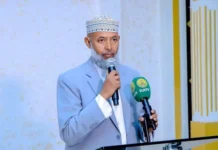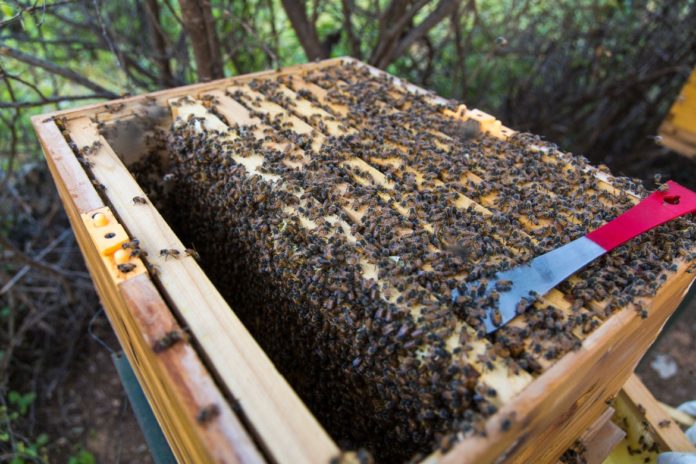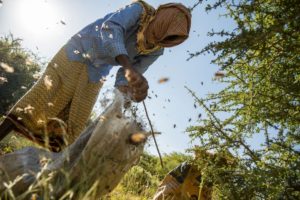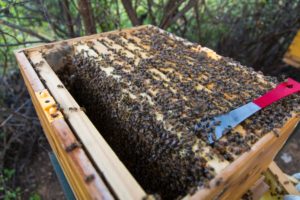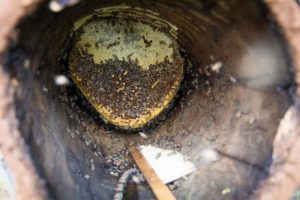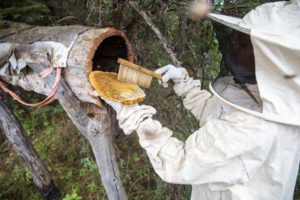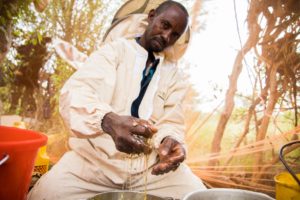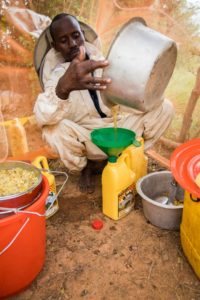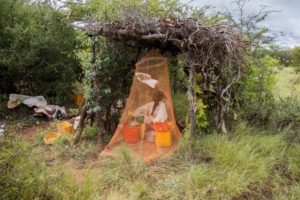Ali Mohamed, 37, gathers a swarm of bees for relocation to a new hive. Honeybees are at their most docile when swarming. At this stage, they are looking for a home and do not have honey and brood (eggs, larvae and pupae of honeybees) to protect. In addition, their guts are full of honey stores from the original hive making them gentle partly because it’s physically difficult to tilt their abdomens enough to sting. Like how we become sluggish after a heavy meal. Mohamed keeps a total of 67 hives in his farm in Usbello in Huddur. Half of them are co-owned with members of the cooperative.
Persistent drought followed by torrential rains that unleashed one of the worst floods in years. All happening against a backdrop of frequent fighting and violence. This sums up last year’s emergency humanitarian situation in Somalia.
Our immediate response was in the form of food, cash and household items aimed towards helping those distressed cope with the sudden disruption of their lives. However, the bulk of our work in Somalia takes place after the emergency and involves helping the families regain self-reliance. For the bee-keeping community in Huddur, located in the central Bakool region as well as those living in the northern part of Laasqoray district, Sanaag region, this meant supporting them with beehive boxes, protective gear and tools that could help revive their honey business. In addition, through cooperatives, the farmers received training on how to make the most out of their trade. These pictures show what goes into honey-making in Somalia.
ICRC






